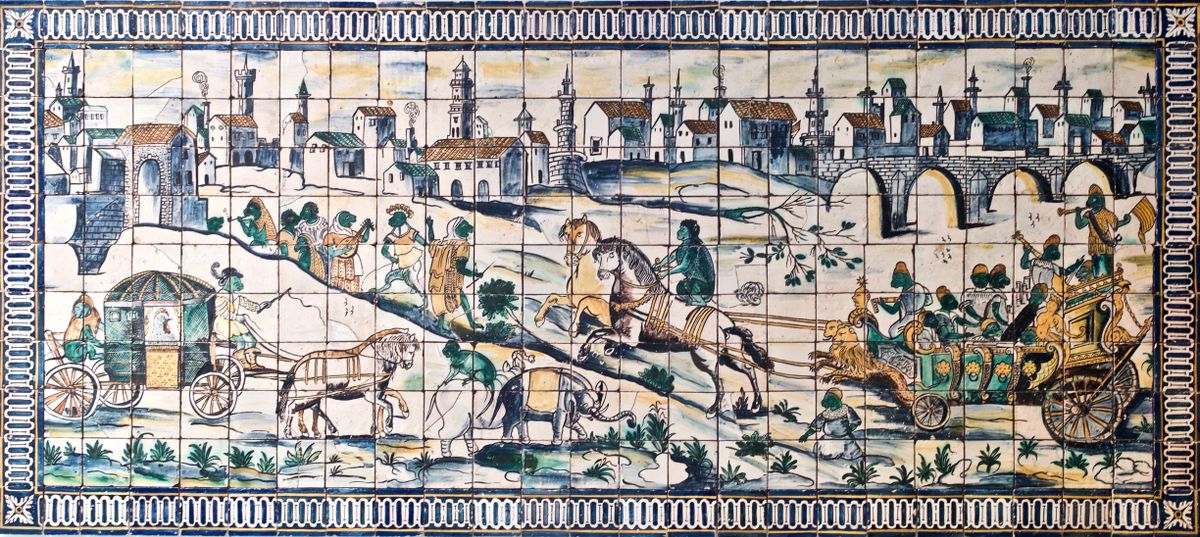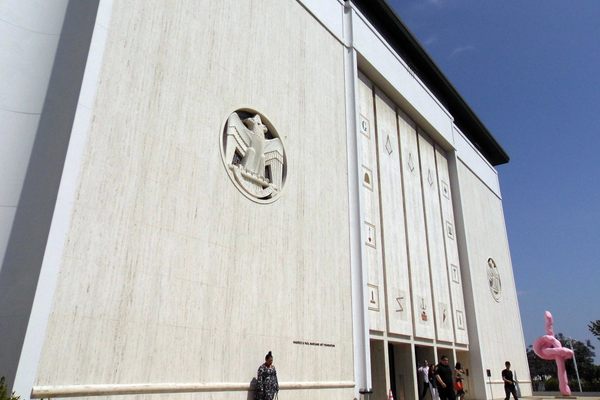About
Tiles are deeply steeped into the Portuguese cultural fabric. Decorating palatial buildings, humble houses, church façades, and public walls, tiles are ubiquitous in Portugal. This tradition dates back to the 13th century, when the Moor conquered the Iberian Peninsula.
The Portuguese word for tile, azulejo, comes from the Arabic word الزليج (al-zellij), which refers to polished stones used for mosaics. In line with Moorish aesthetic sensibilities, the earliest examples of Portuguese tiles exhibit geometric patterns, but the art of tiling evolved through the centuries, undergoing radical changes.
The National Tile Museum (Museu Nacional do Azulejo) pays homage to the evolution of this tradition, showcasing fine examples of tile-work from each evolutionary phase. By the 17th century, panoramic vistas, animals, and human figures were commonly portrayed on tiles, providing important social clues of the time in which they were created. A striking example of this is The Wedding of the Hen (also known as The Chicken’s Wedding), which was one of the most irreverent azulejos commissioned during that century.
It is impossible to say for certain who created this enigmatic masterpiece. What is known is that it was found in Quinta de Santo António da Cadriceira, in Turcifal village. The owner of this estate was Henrique Henriques de Miranda, who, upon his death, owed a substantial amount of money to a famous azulejo artist by the name of Manuel Francisco. Based on this evidence, it is inferred that Manuel Francisco was in fact the artistic mind and hands behind The Wedding of the Hen. This conclusion is further corroborated by stylistic similarities between this tile-work and others produced by Manuel Francisco.
The titular hen appears in the lower left corner of this work, where it sits inside a rather pompous horse-drawn coach, ostensibly heading to the wedding. Apart from the hen, the work is noticeably populated by anthropomorphic monkeys portrayed driving coaches, riding horses, impersonating the musicians heading to the wedding, or simply traveling.
This tile-work can best be classified as a singerie, a form of visual art in which monkeys act as humans. This is an artistic choice that was often used to highlight the seeming silliness inherent in certain groups of people. In this particular case, the War of Restoration was underway at the time, and given the fact that Henrique Henriques de Miranda was a chamberlain of D. Afonso VI, it can safely be concluded that the monkeys were probably deployed to satirize the defeated side of the war.
Related Tags
Portugal: A Culinary Adventure from Porto to Lisbon
Explore Portugal through food, from the cities to the seaside.
Book NowCommunity Contributors
Added By
Published
March 7, 2022




























